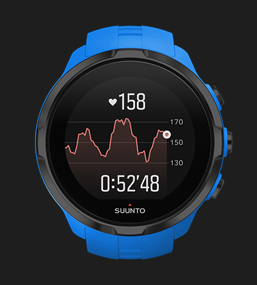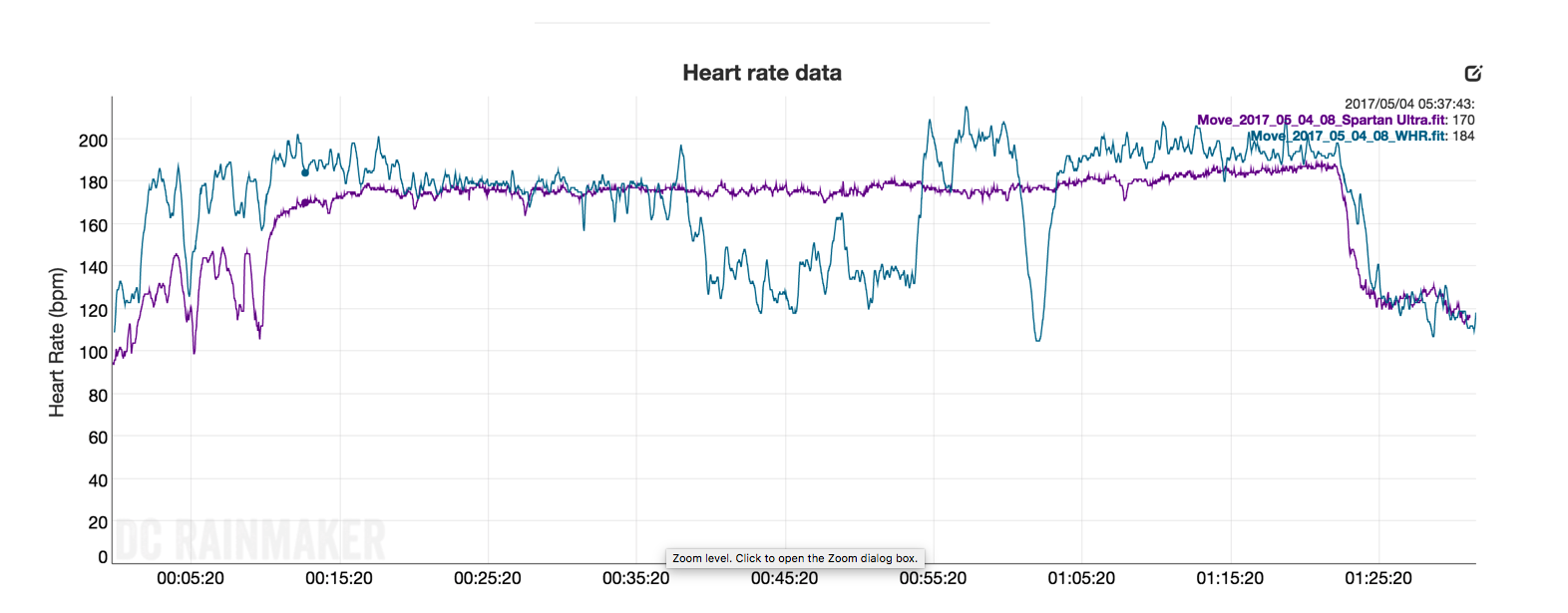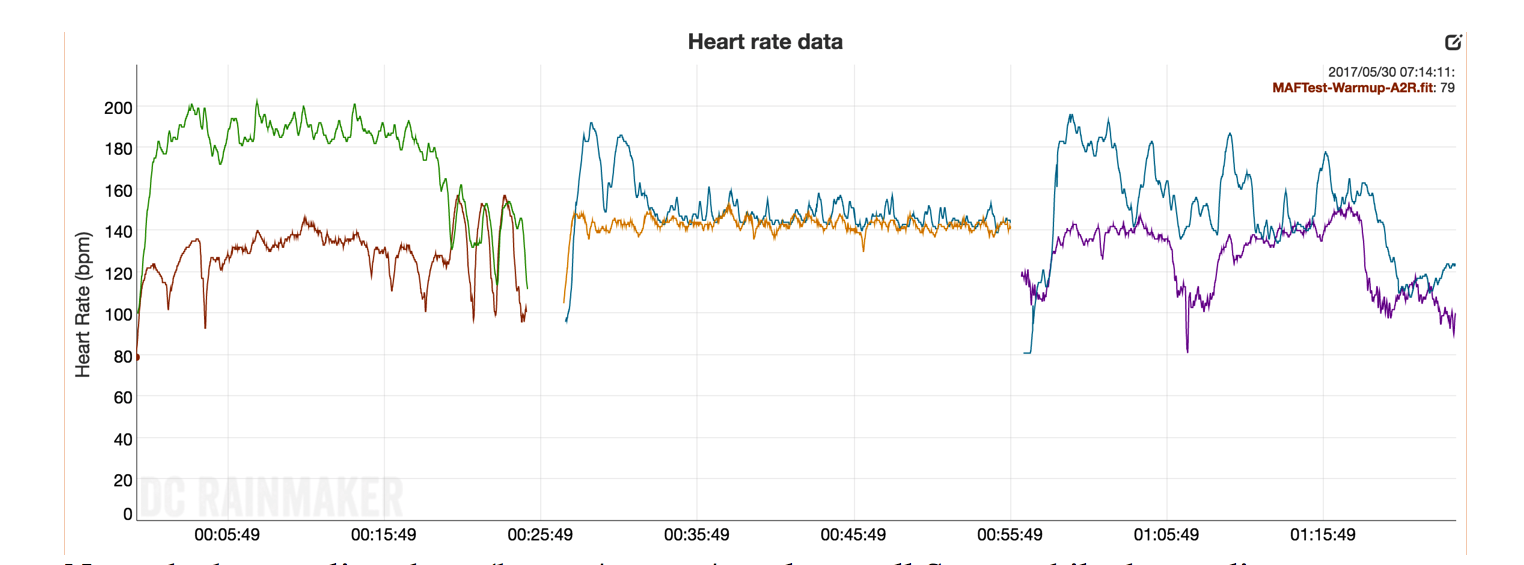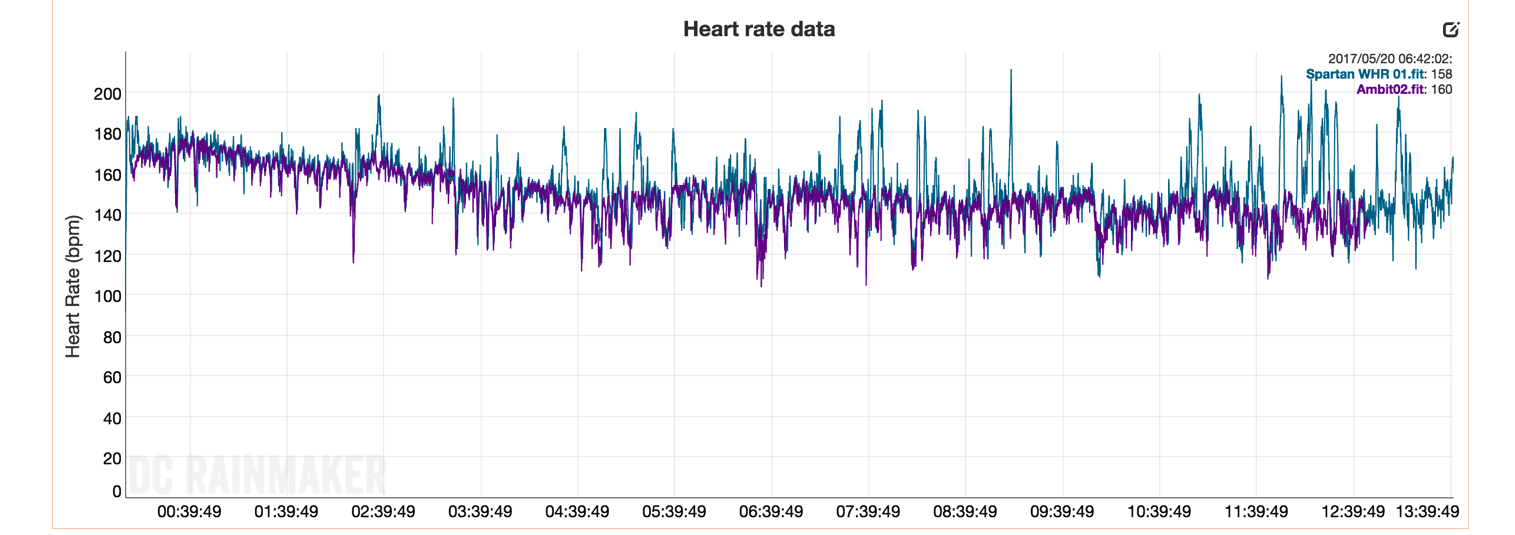TRM Associate Editor,Tegyn Angel, reviews – finally – the latest from Suunto, the Spartan Sport with Wrist (aka Optical) Heart Rate. So why did it take so long…?




This is the hardest review I’ve ever had to write. To my chagrin it’s taken a lot longer than I think is fair to Suunto (who provided the watch for this review) and for that, I apologise. I started writing this review on the flight from Melbourne to Ultra-Trail Australia, a full two months ago. However, I really wanted to ensure I gave the Suunto’s Spartan Sport with Wrist (aka Optical) Heart Rate (henceforth SSWHR, because that’s ridiculous) every opportunity to impress. It was a case of “it’s not you it’s me”. I was looking at the watch from the perspective of someone who wears a Heart Rate Monitor during every training session they do, whether running, gym, swimming, cycling or otherwise. I train in a Maffetone-inspired, Polarised way that relies heavily on Heart Rate. For me, HR accuracy matters as it directly influences how hard I push or whether I pull back, whether I need to up the volume or pick up the intensity, whether I need to rest up or commit more time. For this reason, I expect I’m a lot more demanding of my Heart Rate accuracy than most; I’m a data-driven metric-nerd and I strongly doubt that I fit into the user profile that Suunto identified for this unit.
While this won’t be a blow by blow review of the watch, I will give you a quick run down of several key differences between the Spartan Sport (SS) and what is, for all intents and purposes, a Spartan Sport with an optical sensor. Instead, my goal is to focus on the one major thing that separates the SSWHR from all other Spartan Models: The Optical Heart Rate Monitor. If you’d like a fully-geeked, in-depth, scales-on-the-table review, we would, as always, point you toward DC Rainmaker’s epic review (and all the associated user comments): https://www.dcrainmaker.com/2017/05/suunto-spartan-sport-wrist-hr-review.html
Key differences between the SS and the SSWHR
- The SSWHR ships out of the box with Suunto’s much-improved firmware updates
- The SSWHR weighs in at 74g vs. 70g for the sport and 73g for the Spartan Ultra
- The battery life on the SSWHR is advertised as 8, 12 and 30hr (depending on your configuration) vs. 10, 16 and 40hr on the Sport
- The SSWHR offers several graphs within the watch itself, allowing you to perform some basic analysis of your runs
- Utilising the Optical HR, the SSWHR provides much more accurate tracking of your daily calorie burn rate and heart rate, though if enable this smashes the battery life and presently isn’t saved anywhere, so it’s a bit like measuring your distance travelled by dropping rocks off a boat.
So that’s mash, now here’s the meat.
Does the SSWHR cut the mustard for everyday use? You bet it does. It’s a rugged, fully-featured sports and outdoor watch that, with the exception of an Ultradistance battery life and barometric sensor, does pretty much everything you could ask of it. Of course there a few limitations the app ecosystem is very underdeveloped, but if you want a tool to aid your training, then this is probably the sexiest option on the market right now. The Valencell optical sensor is considered the most accurate on the market and for everyday tracking the SSWHR is spot on. Generally, average heart rate values differed by about 6bpm (sometimes lower, sometimes higher) between Optical and Strap-based HRs. Certainly accurate enough for a trip to the gym or for runners who aren’t actively using their heart rate to influence their programming.
While no Optical HR is accurate enough to measure Heart Rate Variability (HRV) yet, it is certainly accurate enough to help you with that more traditional measure of recovery: Resting Heart Rate. This stalwart of biometrics is a pain in the arse if you have to put a strap on (not that it’s particularly hard to count by hand), but Optical HR makes it a breeze to record, and the SSWHR allows you to automatically track your resting HR throughout the day. While Movescount doesn’t currently record this data, the boffins at Suunto are working on it, and it would be a great way to track not only improvements in fitness (indicated by a lower resting HR) but also recovery trends.
So, in short, yes, the SSWHR is a great option for everyday usage and those interested in tracking their HR but who aren’t particularly worried about a few BPM here and there.
Is the SSWHR accurate enough for HR Based Training? Ok, let’s not avoid it any longer. Is the SSWHR provide Heart Rate data that is accurate enough to replace the traditional chest strap? Generally speaking, the answer is yes. However, if you want to get down into the weeds, I’d say: at a pinch, with some caveats, and depending on how technical you want to get. The problem I have with the SSWHR is not that it isn’t accurate. Rather, it’s that it is inconsistently inaccurate. To demonstrate I need some pretty line drawings!
You see, I just can’t find a pattern with the inaccuracies. On this run with the SSWHR (vs. the Spartan Ultra with Movesense Chest Strap), I very nearly came to the conclusion that the SSWHR was a wildly inaccurate waste of space. Instead, I shaved my wrist to make sure there was no interference, did the thing up tighter and moved it higher on my wrist (apparently I have a very small ulna, and so the watch slips down close to my wrist… and that’s a bad thing for Optical HR accuracy???).

Public Link: https://analyze.dcrainmaker.com/#/public/67926f9a-b179-4d41-4823-8ca8620cd267
Whereas these runs, made me think “ok, so it takes a little while to calibrate and settle down, but then it’s RIGHT on the money!”

Public Link: https://analyze.dcrainmaker.com/#/public/e702bb7a-c502-4870-62fb-d645ce9f318b

Public Link: https://analyze.dcrainmaker.com/#/dcc/5e4b584f-ad76-4410-5be4-ecb60cad47f1
So to test that theory, why don’t I do three runs back to back where I start, run and stop the watch completely and then start, run and stop it again, etc. If it needed to “warm up” and “settle in” to my wrist, the temperature, the space-time continuum, etc., then the first recording should start way off and then calibrate, while the next few recordings should both be spot on. Nope, sorry, that didn’t happen either.
Note: the bottom lines here (brown/orange/purple are all Strap, while the top lines green/blue/blue are all SSWHR).

Public Link: https://analyze.dcrainmaker.com/#/public/6030dd06-6560-4126-7354-1cc3a7b9f905
Ok, well what about longer runs? Maybe it’s emotional and doesn’t like me leaving it so soon? I spent almost 14hrs with the thing, and it still acted out like the unwanted step child. Sure, its behavioural trends were tolerable, but how many times do you get to cry wolf before the village starts ignoring you?

Public Link: https://analyze.dcrainmaker.com/#/public/a8f26620-0ee9-4308-454c-e42cec334f95
After reading everything I could find on the accuracy of Optical HR readers, I was left with two interesting conclusions. Firstly, the watch is top-heavy. Optical HR seems to work best when the device it’s attached to is nothing more than a silicon band. That is, when it’s not connected to a watch at all! No screen, no GPS, no bezel and nothing to pull the sensor away from your skin. The watch bouncing up and down on your wrist is what leads to inaccuracy. This certainly seems to be confirmed by this Indoor Cycling workout I did where my wrist didn’t “bounce” at all (at least not compared to running). There’s still some differences but overall it’s on track. If anything the SSWHR appears to have a higher “resolution” than the strap.

Public Link: https://analyze.dcrainmaker.com/#/public/4096ffab-5057-40eb-4b2a-e6b6321ee70d
Secondly, and anecdotally, the SSWHR seems to get more accurate with time. This applies both to each run and over the lifespan of the watch itself. I didn’t find that so I can’t confirm or deny, but that doesn’t make it any less interesting.
So, back to the question, Is the SSWHR provide Heart Rate data that is accurate enough to replace the traditional chest strap? Well, If you’re looking for a tool to help you pace your runs then the SSWHR has you covered. If, for example, you want to run at a pre-determined heart rate (let’s say your Maffetone MAF HR), then a quick glance at the display and you’ll have enough information to know whether to hold, push or back off. It’s when you start to get technical that you’re going to struggle. If, for example, you use Training Peaks and their HR Based TSS (Training Stress Score) calculators to analyse each session and its contribution to your weekly training load or Annual Training Plan (ATP), things are going to get messy. Likewise, if you’re going from a standing still or a steady running pace into hard, wrist-shaking efforts (e.g. Fartlek or sprint sessions), I’d expect the combination of cardiac lag, optical distortion and the watch’s unpredictable degradation to spit out some pretty confusing data. As I said before, if you want to get down into the weeds you’ll definitely find some situations where the Optical HR is not yet up to the job.
In conclusion, I think it’s important to note that ALL Optical HR watches on the market have pretty similar issues. They’re all too heavy to make the reader super accurate. But that’s the price you pay for incorporating it into a watch. While it’s not going to give you lab-quality HR data, I think some combination of the two Use Cases above (Daily Use and HR Trainer) is where the SSWHR is best suited. I currently use the Optical HR at the gym and on the bike and then pair it with a Movesense Strap for runs, which I think is ideal. It looks good, serves its purpose and I work around its limitations. The SSWHR is a great addition to the category, and IMHO by far the best-looking of all the Optical HR watches on the market (Apple Watch notwithstanding).
Spartan Sport with Wrist (aka Optical) Heart Rate
RRP$699.99 – $849.99 (special editions)
www.suunto.com (AU)












